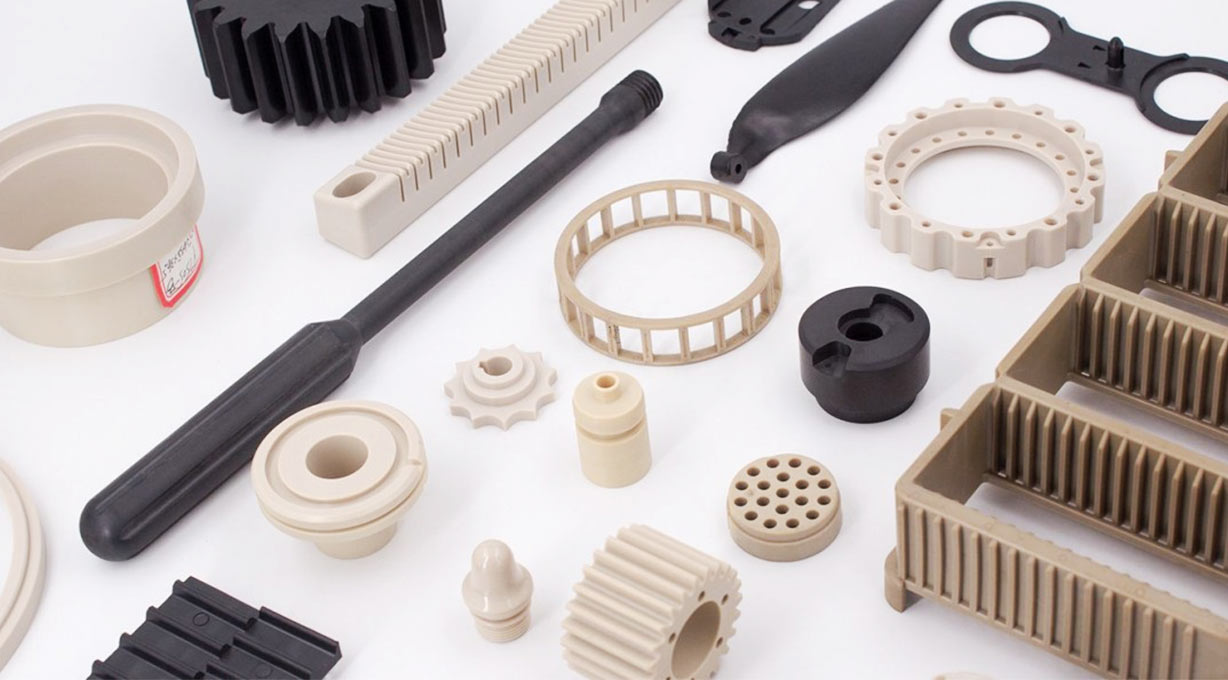In-Depth Analysis of High-Performance Plastic Molding Essentials: Focus on PEEK
This article provides an in-depth analysis of the essential considerations for high-performance PEEK injection molding, including material characteristics, mold design, process parameters, equipment requirements, and post-processing steps, aiming to help achieve high-quality molding and avoid risks.
In the field of high-end manufacturing, PEEK (Polyetheretherketone) has emerged as the material of choice for industries such as aerospace, medical devices, and automotive electronics, owing to its exceptional high-temperature resistance, chemical resistance, and mechanical properties. However, the injection molding process for PEEK demands extremely high standards for equipment, technology, and process management. Even minor oversights can lead to product defects or substandard performance. This article offers a comprehensive analysis of the core considerations for successful PEEK injection molding, ensuring high-quality outcomes.

1. Material Characteristics and Drying Process
PEEK is highly susceptible to moisture, which can cause hydrolysis during injection molding, leading to molecular chain breakage and degradation of mechanical properties. To mitigate this:
- Strict Drying: Dry PEEK at 150-160°C in a hot air circulating oven for 4-6 hours to ensure a moisture content below 0.02%.
- Immediate Use: Utilize dried PEEK within 2 hours to prevent re-absorption of moisture.
- Material Batch Management: Test and adjust process parameters for different PEEK batches due to variations in molecular weight distribution and flowability.
2. Mold Design and Temperature Control System
PEEK's high melting point (343°C) and low thermal conductivity necessitate precise thermal management within the mold.
- Hot Runner Design: Implement a needle valve hot runner system to minimize sprue residue and prevent contamination from carbonized PEEK materials.
- Mold Temperature Control: Maintain the mold temperature between 170-200°C using a mold temperature controller for zoned control, ensuring cavity temperature uniformity within ±3°C.
- Ventilation Optimization: Address PEEK's high melt viscosity and susceptibility to air entrapment by designing vent slots (0.02-0.05mm deep) at the parting line and insert gaps, considering vacuum extraction if needed.
3. Injection Molding Process Parameters
PEEK injection molding requires rapid forming under high temperature and pressure, with strict control of the thermal-mechanical history.
- Three-Stage Temperature Control:
- Barrel Temperature: 380-420°C (decreasing from front to rear).
- Nozzle Temperature: 400-410°C (to prevent drooling).
- Mold Temperature: 180-200°C (to avoid excessive cooling and internal stress).
- Injection Speed and Pressure: Use high-speed (≥100mm/s) and high-pressure (≥150MPa) injection to minimize melt residence time and reduce degradation risk.
- Holding Pressure and Cooling: Maintain holding pressure at over 80% of injection pressure, with a cooling time of 30-60 seconds to prevent warpage.
4. Equipment and Environment
PEEK injection molding demands stringent equipment cleanliness and environmental stability.
- Screw Assembly Optimization: Employ a bimetallic screw (with wear-resistant alloy coating) and a compression ratio of 2.5:1-3:1 to reduce shear heat.
- Clean Production Environment: Ensure the injection molding workshop meets Class 10,000 cleanliness standards (ISO Class 7) to prevent dust particle contamination.
- Equipment Maintenance: Regularly inspect the barrel inner wall for wear to prevent product defects caused by PEEK carbonization.
5. Post-Processing and Inspection
The performance of PEEK products is highly reliant on the post-processing process.
- Annealing Treatment: For precision products, anneal at 200°C for 4 hours to eliminate internal stress and enhance dimensional stability.
- Performance Testing:
- Tensile Strength ≥95MPa (ASTM D638).
- Flexural Modulus ≥3.5GPa (ASTM D790).
- Weld line strength verification through CT scanning and mechanical testing.
- Batch Traceability: Establish a complete quality archive from raw materials to finished products to meet traceability requirements in medical, aerospace, and other fields.
Conclusion
The challenges in PEEK injection molding lie in the synergistic optimization of material characteristics, process parameters, and equipment capabilities. Predictive analytics through digital simulation (e.g., Moldflow) and process optimization using Design of Experiments (DOE) are essential. Future advancements, such as AI temperature control systems and supercritical CO₂-assisted molding technologies, are expected to further enhance yield and efficiency in PEEK injection molding.